Winter solstice
As the winter solstice approaches, I’m thinking about roots and how we dig deep to withstand storms and lift other beings that need us. To honor the coming of the light and long shadows, I’ll gather pinecones and evergreen boughs to arrange with candles on a table. I’ll search for fallen pieces of white pine from the many trees in our woods to make into a wreath with cuttings from the winterberry bush and wrap it with wild grapevine.
I’ll use fallen limbs from as many different trees as I can find — birch, oak, maple, ash and hickory — to make a fire. Near the fire, we will gather and write down something that we want to leave behind. We’ll each put our piece of paper into the fire and let it burn. A blessing of thanks or a poem will wrap the circle.
Underground roots
In a gardening newsletter I read, there was a link to the image collections of Wageningen, a research university in the Netherlands. One of the collections is a magnificent spread of botanical drawings of tree and plant roots. I lost a few hours of my week marveling at how little we see in the life of a plant.
Also, how little do we know about plants? I found it joyfully amazing to read the news last week about a research study that showed moths avoid laying eggs on host plants based on hearing their sounds of distress. The moths choose healthier plants with better survival odds. Plants talk and insects can hear it.
Even though the collection is focused on trees native to Europe, it’s an enriching insight for a gardener to understand the scale of tree and plant roots and what we may be disturbing when we dig into the soil or make plans to place plantings near them.
I’ll call attention to a few drawings that I found particularly interesting below, but all of it is worth perusing.
Bog cranberry (Vaccinium oxycoccos) — This diminutive shrub is found in wetland areas of the northeast U.S. At just 5 inches high, at most, its prostrate spreading habit essentially layers upon itself. In the drawing, the roots stretch four times its surface length, going deeper down into the soil than the visible foliage area.
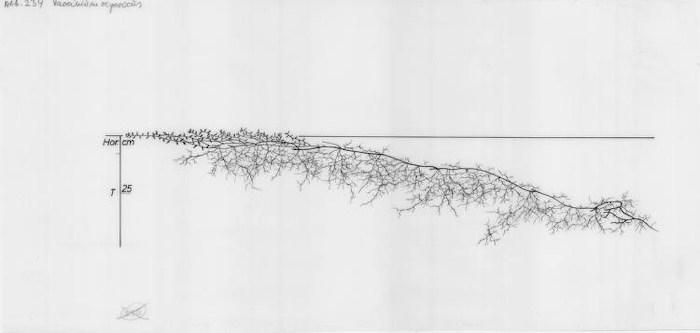
English oak (Quercus robur) — This oak species is widely planted in North America. Some oaks are notable for having a taproot, a long, thick central root that reaches far down into the soil, with a network of fine lateral roots closer to the surface. Getting a glimpse of the full network helped me understand how these trees survive and grow.
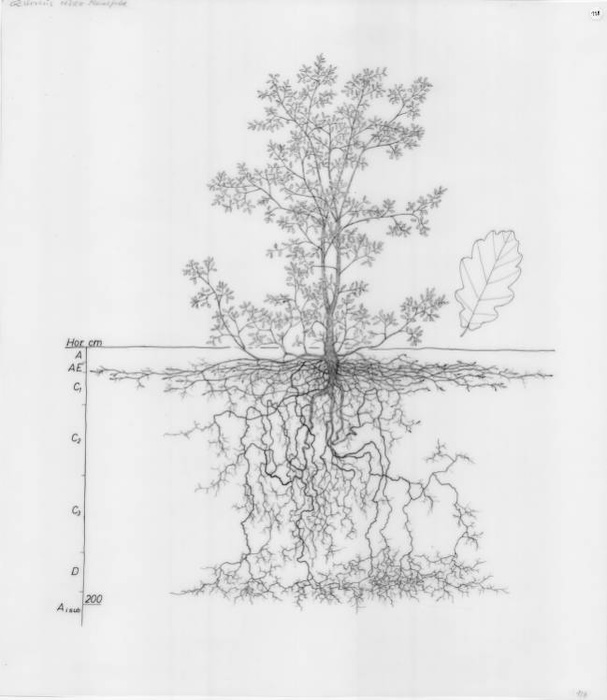
Norway maple (Acer platanoides) — Although this tree isn’t a great neighbor in our native forests, I chose it for comparison with the oak. The roots are mostly lateral, not going deep, which is an interesting strategy.

Norway spruce (Picea abies) — These are commonly found in our area and the dense bunching of fine roots near the trunk explains why it is so difficult to establish grass or other plants close to it.
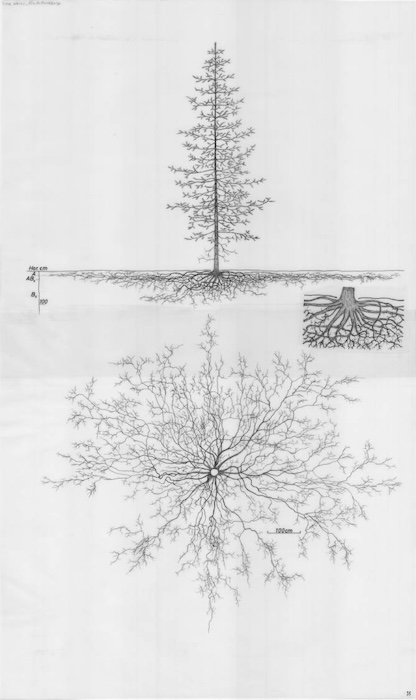
Sycamore maple (Acer pseudoplatanus) — The illustration shows the tree growing on a slope and its intelligence in bracing itself through a network of thick and fine roots going uphill and downhill.
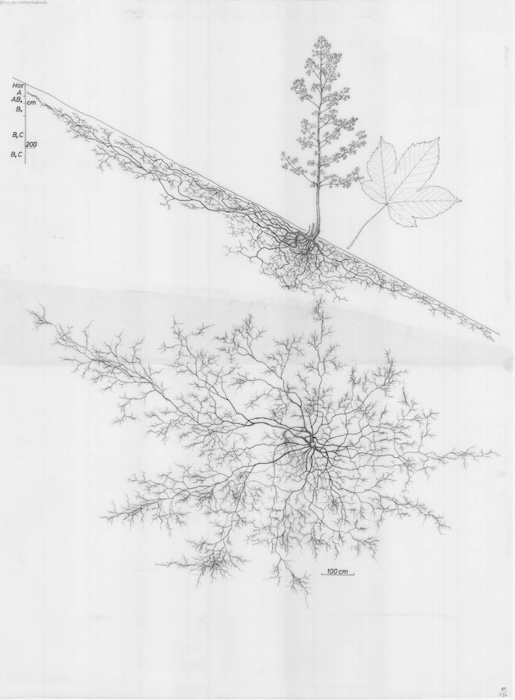
Common self-heal (Prunella vulgaris) — This mint family perennial herb is well known to gardeners and typically considered a weed, although its flowers are useful to pollinators. The drawing shows there is more of the plant in its root system below the ground than the part growing above the ground. I’ll give it much more respect.
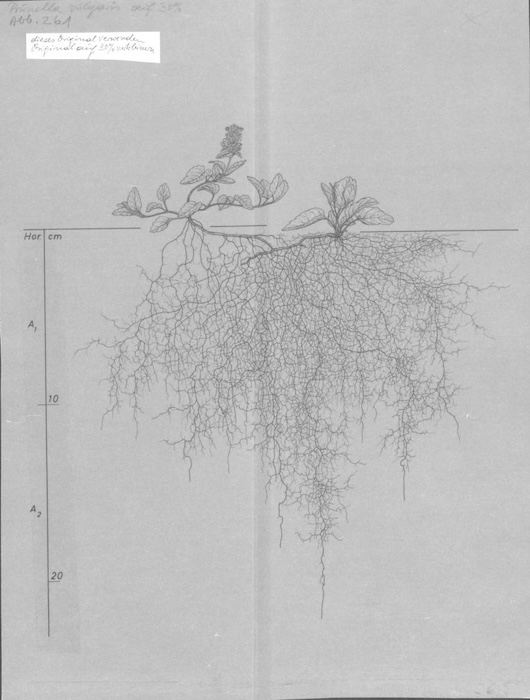
Roots in action
I’m as curious as the next person about the state’s draft environmental impact statement for the Hudson Highlands Fjord Trail. It’s important that the community pays attention to this process and is a voice for the river, the hundreds of trees slated for destruction and the wildlife in the area.
Many questions need to be asked before the process is complete. The report is online at dub.sh/state-parks-HHFT for public comment. The ecological impacts for the southern part of the trail begin around Page 65. That’s as far as I’ve read, so far.

